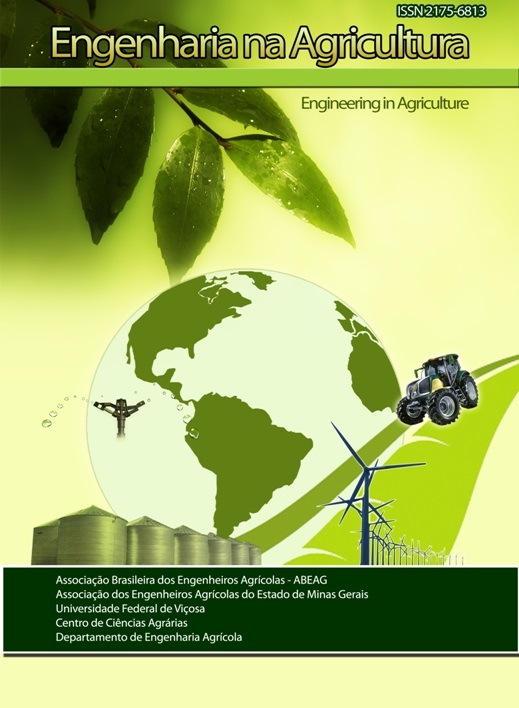SOYBEAN CULTURE UNDER SOIL MANAGEMENT AND SOWING SYSTEMS
DOI:
https://doi.org/10.13083/reveng.v26i6.807Keywords:
Agronomic characters, Asian rust, Cerrado, Glycine max, YieldAbstract
Modern agriculture longs to increase grain yield without the necessity of opening new areas. In order to do that, techniques such as line spacing manipulation and plant density are being studied with the intention to obtain higher productivity. The aim of this study was to evaluate the influence of different soil management and sowing systems on the Asian rust severity and on the agronomic characteristics of the soybean. The experimental design was a randomized complete block design with 3x3 matrices, corresponding to three soil management systems and three types of soybean sowing, with four replications. This methodology achieved a total of 36 experimental plots shaped by 4 meters wide and 10 meters long, totalizing an area of 40 m2. The interaction between direct and densified sowing obtained less severity of Asian rust and showed a tendency to raise plant's height at flowering, maturation and insertion of the first pod and to increase plants' population and productivity.
Downloads
Downloads
Published
How to Cite
Issue
Section
License
Authors who publish with this journal agree to the following terms:
The author(s) authorize(s) the publication of the text in the journal;
The author(s) ensure(s) that the contribution is original and unpublished and that it is not in the process of evaluation by another journal;
The journal is not responsible for the views, ideas and concepts presented in articles, and these are the sole responsibility of the author(s);
The publishers reserve the right to make textual adjustments and adapt texts to meet with publication standards.
From submission, the author is fully conceding the paper's patrimonial rights to the publication, but retaining the owner of its moral rights (authorship and paper's identification) according to Creative Commons Attribution-Noncommercial.








 Licensed by
Licensed by 